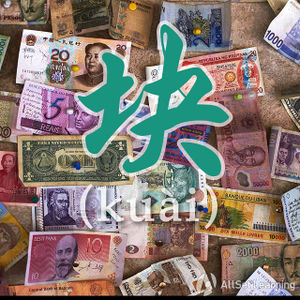Difference between revisions of "Counting money"
ViktorMugli (talk | contribs) |
Yangrenjun (talk | contribs) |
||
| Line 1: | Line 1: | ||
| + | {{Grammar Box}} | ||
== Structure == | == Structure == | ||
| Line 47: | Line 48: | ||
[[Category:A2 grammar points]] | [[Category:A2 grammar points]] | ||
| + | {{Basic Grammar|块|A2|Number + 块/元 (+ Number + 毛/角) (+ 钱)|给 你 五 <em>块</em> 三 <em>毛</em>。|grammar point|ASGL6JOE}} | ||
| + | {{Rel char|元}} | ||
| + | {{Rel char|毛}} | ||
| + | {{Rel char|角}} | ||
| + | {{Similar|Indicating a Number in Excess}} | ||
| + | {{Similar|Approximating with sequential numbers}} | ||
Revision as of 04:48, 13 June 2012
-
Level
-
Similar to
-
Used for
-
Keywords
Structure
Chinese has a specific structure for talking about quantities for money:
Number + 块 + Number + 毛
The first number is the amount of whole RMB (or dollars etc.), and the second is the amount smaller units (e.g. cents). So 3.86 RMB is
- 三 块 八 毛 六
If the smaller units are only in tens, you can just say the number of tens. So 3.8 RMB is:
- 三 块 八
And if there's no smaller unit, e.g. 3 RMB, you can just say:
- 三 块
块 is the more common, informal way to talk about money. More formally you can use 元 in exactly the same way. This is similar to the difference between "dollars" and "bucks" in American English, or "pounds" and "quid" in British English. 块 is appropriate in more situations than "bucks" or "quid", though.
See also
Sources and further reading
Books
- A Practical Chinese Grammar For Foreigners (外国人实用汉语语法) (pp. 88-9) →buy
- Integrated Chinese: Level 1, Part 1 (3rd ed) (pp. 233-4) →buy



